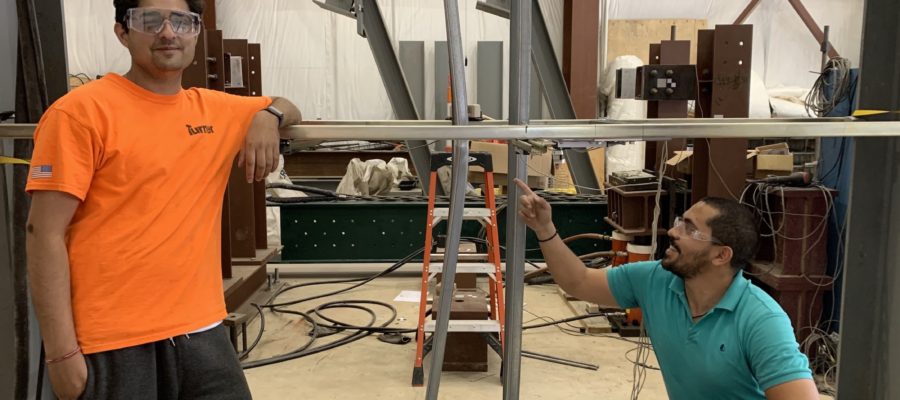(Steel Stud Assemblies Bearing on Concrete Slabs)
Overview
The objective of the proposed work is to develop a verified method to account for the reduction in axial capacity of steel stud assemblies (i.e., stud/track) where there is not full bearing, specifically, under the situations where steel stud assembly is close to the concrete slab edge or even outside the edge (i.e., overhang). Studs bearing under these situations will have reduced axial capacity and AISI standards AISI S100 and S240 do not provide guidance on the calculation of this reduced axial capacity. This work aims to characterize experimentally and computationally the effect of stud bearing on concrete, examining overhang distance, edge distance, and various assembly configurations. Through examining the impact of these variables, design recommendations to consider the impact of these variables on the axial capacity of studs will be developed. In particular, the potential non-uniform bearing stress distribution due to the crack and/or crushing of concrete will be explored and measured. The complete experimental and computational results will be compiled into a report along with appropriate AISI-S240 Specification provisions and appropriate design examples.
The work is sponsored by the American Iron and Steel Institute and the Steel Framing Industry Association. The principal investigators are Asst. Prof. Kara Peterman and Asst. Prof. Zhanjie Li.
Disclaimer
Any opinions, findings, and conclusions or recommendations expressed in this material are those of the author(s) and do not necessarily reflect the views of the American Iron and Steel Institute nor the Steel Framing Industry Association.

